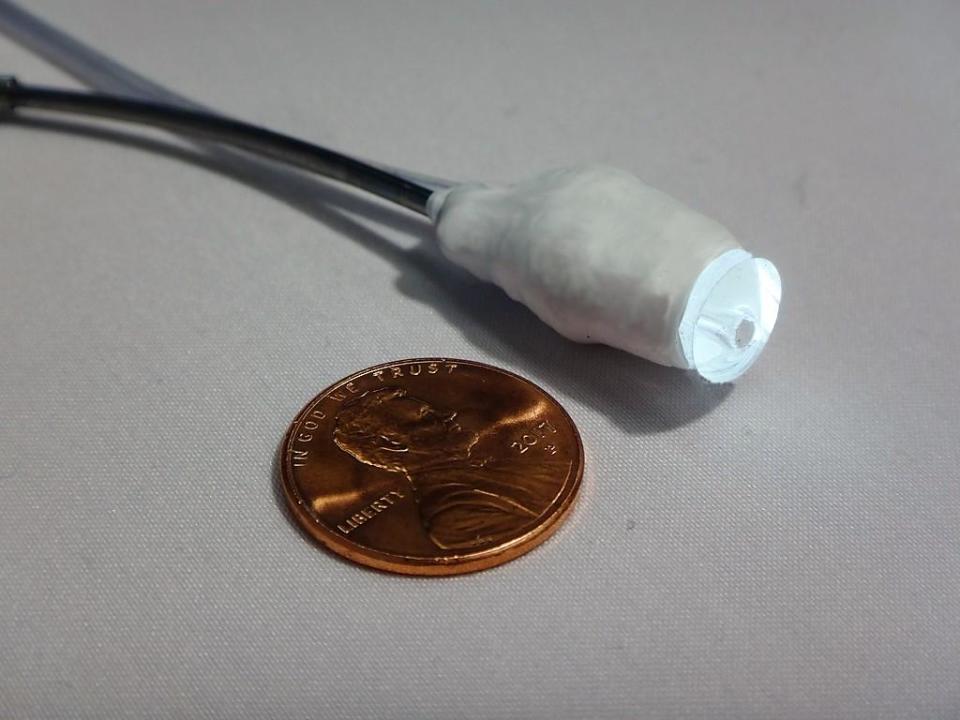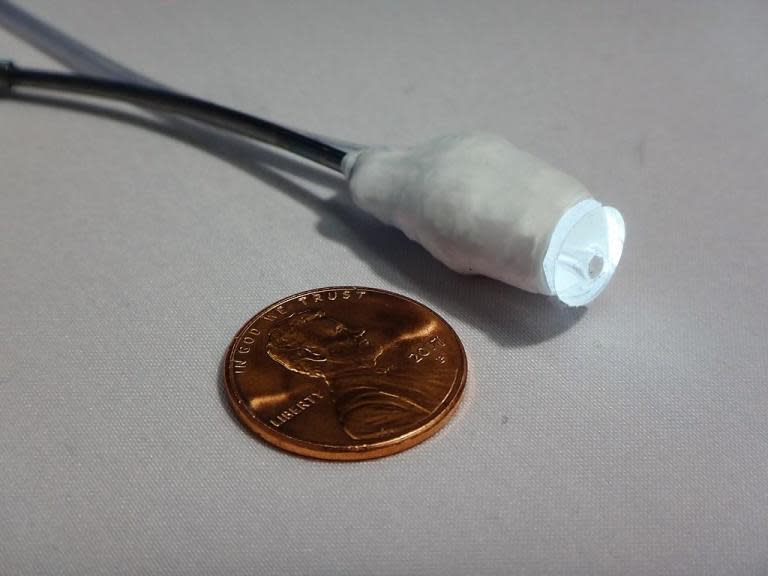Robot surgeon pokes its way inside human body to fix leaky heart
A robot equipped with artificial intelligence has navigated its way through a model of a blood filled heart and repaired a leaky valve - proving that it could do a similar thing in a human body.
The catheter was programmed by scientists at Boston Children's Hospital to find its way to the problem and fix it.
A bioengineer involved in the operation likened the robot to a self-driving car navigating to a desired destination inside a human body.
Surgeons currently use manually-controlled robots to carry out such procedures, either using joysticks or magnetic systems.
The proof-of-concept procedure, known as a paravalvular aortic leak closure, is highly technical and usually demanding on the surgeons involved.
Using autonomous robots to carry out these types of operations will free up surgeon's time to focus on more complex parts of the procedure, the researchers say.
"The right way to think about this is through the analogy of a fighter pilot and a fighter plane," said senior investigator Pierre Dupont, chief of Pediatric Cardiac Bioengineering at Boston Children's Hospital after the findings were published in the journal Science Robotics. "The fighter plane take on the routine tasks like flying the plane, so the pilot can focus on the higher-level tasks of the mission."
Once the robot reached the leaky valve, a cardiac surgeon took control and completed the operation.
Several trials of the technique saw the robot take roughly the same amount of time as a human surgeon to navigate to the heart valve.
"The navigation time was statistically equivalent for all, which we think is pretty impressive given that you're inside the blood-filled beating heart and trying to reach a millimetre-scale target on a specific valve," Dr Dupont said.
It is not clear if or when this type of robot will be used in real-world surgery, with the US Food and Drug Administration (FDA) yet to develop regulatory frameworks for AI-enabled devices.

 Yahoo News
Yahoo News 

